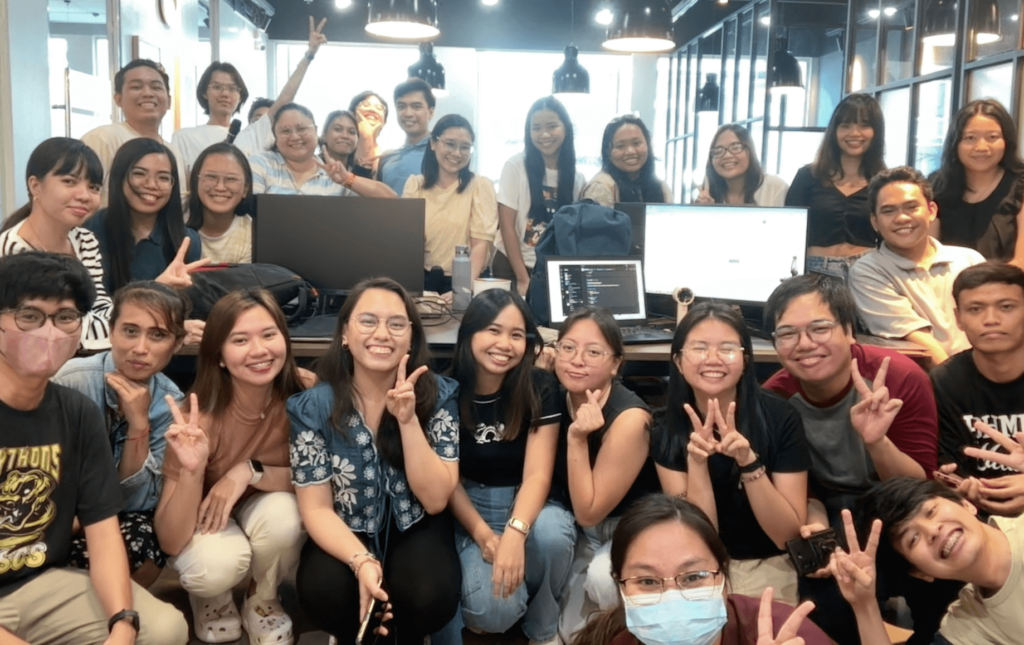
Cheska B. |
August 29, 2024
Taking charge of an unfamiliar branch has been the most transformative experience of my career at Lexcode, one that has reshaped my understanding of leadership and adaptability.
Transitioning Roles
In my nearly four years at Lexcode, I’ve explored various roles, each presenting unique challenges and growth opportunities. My journey took an unexpected turn when, despite applying for a Desktop Publishing Artist position, I found myself stepping into the role of Localization Project Coordinator. This role allowed me to dive deep into project management and build a strong foundation.
A pivotal moment came when I served as an Overseas Project Operator (OPO) for four months. This role involved testing local human resources for vendor management on translation projects for headquarters, a challenge that highlighted my adaptability and problem-solving skills.
Transitioning from project management to an HR Officer role was a significant shift. Here, I was introduced to the Collab Branch, an unfamiliar territory I was tasked to lead in 2023. This transition was daunting yet exhilarating, offering a blend of new challenges and growth.
Navigating New Territory
Stepping into the Collab Branch, I felt a mix of excitement and apprehension. While the faces were familiar, having worked under the same branch before the pandemic, the processes and environment were distinctly different. Instead of imposing changes immediately, I chose to observe and listen. My initial weeks were spent understanding the team’s strengths, challenges, and the branch’s culture. This approach not only provided valuable insights but also demonstrated to the team that their voices mattered.

Learning from the Team
Leadership, I’ve learned, isn’t just about giving directions; it’s about learning from those you lead. I made it a point to spend time with each department, understanding their workflows and pain points.
International Project Management (IPM) Team: Leading this team was somewhat familiar territory, having previously worked with them as an OPO and their former team leader under the HQ Service Team. However, I needed to reacquaint myself with new SOPs and spend time relearning the manuals to ensure I was up-to-date. For the team members, I had to reintroduce myself to new faces while reconnecting with familiar ones.
Editing Team (ATPE): This team posed a unique challenge. Editing isn’t my forte, and I initially struggled with the thought of leading a team whose work I didn’t fully understand. I was fortunate that the team was patient in explaining processes to me. I dedicated time to reading resources and learning their trackers, ensuring that I could manage and report data effectively. Their periodic reports were invaluable in helping me cross-check and analyze data. Initially, I struggled with imposter syndrome, especially when leading team members who had been with Lexcode longer than I had. I often felt, “They will always know better.” However, by acknowledging my limitations and actively seeking their input, we built a foundation of mutual respect and collaboration.
DnB Division:
Building Trust through Transparency
One of my first initiatives was to establish weekly check-ins and an open-door policy. These small steps had a big impact. Team members began to feel more involved and valued, which led to increased morale and productivity. We ensured that all progress was well documented and tracked for transparency and accountability, keeping all members informed.
Personal Growth and Insights
Adaptability: One of the key lessons I’ve learned is the importance of adaptability. Each team and each role required a different approach, and being flexible was crucial. Imagine leading a team of five and having to switch personas depending on whom you are meeting with—it felt like that, and my adaptability skills were challenged. I also found this essential in human resources (HR), where I needed to understand each employee’s communication and work style and be aware of their health and mental well-being. This required me to continually adapt and adjust my approach to support and lead the team effectively.
Cultural Awareness: Navigating the cultural and operational differences within the branch was enlightening. It highlighted the importance of understanding and respecting diverse perspectives and practices. Working with a diverse group of employees posed challenges, but considering all voices was essential for reaching common decisions.
Achievements and Milestones: Under my leadership, the IPM team increased project takeover rates from headquarters by 40%, a testament to our streamlined SOPs and collaborative efforts. Forming and guiding the Deep Learning, Digital, and Marketing teams, as well as creating solutions such as the Lexy app— which we will release later this year— has been incredibly fulfilling.
Conclusion
Reflecting on this transformative journey, I’ve come to appreciate how profoundly this experience has shaped my leadership style and future goals. Balancing the demands of both HR and branch leadership has presented its fair share of challenges, but each role has brought its own unique sense of fulfillment and growth. I’ve transitioned from a leadership style focused on direction to one centered on empowerment, understanding that the most effective leaders are those who inspire and enable their teams to excel.
For those climbing the career ladder, my advice is to embrace the unknown with courage, remain open to learning from your team, and lead with unwavering transparency and empathy. Leading an unfamiliar branch has taught me that authentic leadership thrives on navigating uncertainty, committing to continuous learning, and fostering a culture of openness and understanding. Although the journey may be challenging, the opportunities for personal and professional growth, along with the rewards, are truly boundless.